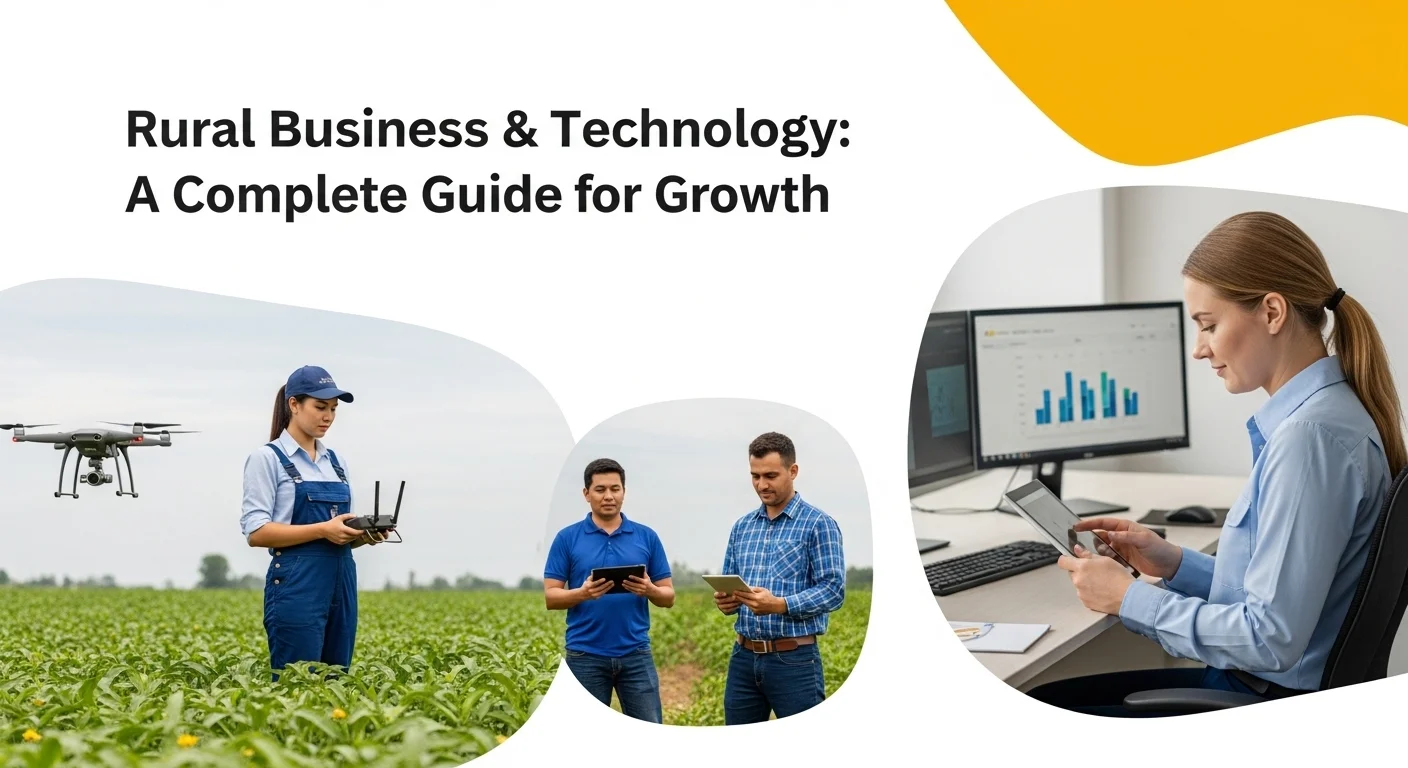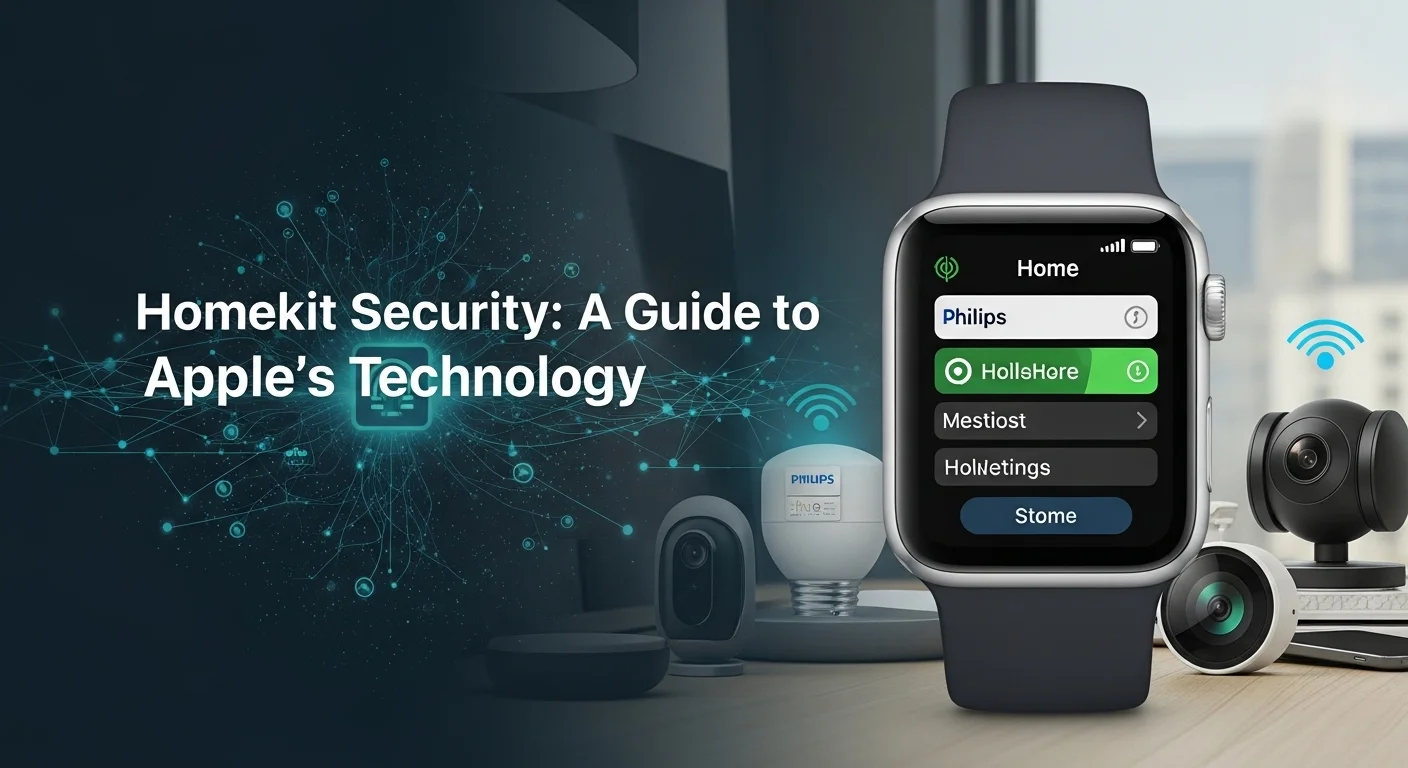Rural Business & Tech: Your Practical Guide to Thriving in the Digital Age

Executive Summary
I've seen it time and again: a brilliant rural business with incredible potential, held back by the myth that technology is only for city slickers. The truth is, tech is the great equalizer. It's the key to breaking down geographic walls, boosting your efficiency, and connecting with customers around the globe. This guide isn't about abstract theories; it's a hands-on look at how real tools—from smart farming IoT to simple e-commerce platforms—are transforming rural ventures. I'll walk you through practical steps and share insights from my experience helping entrepreneurs turn their rural location into their greatest asset.
Table of Contents
What is a Rural Business, Really?
When we talk about a 'rural business,' what do we really mean? For years, it might have made you think of a family farm or the only general store for miles. And while those are still the heart of many communities, technology has completely shattered that old definition. A rural business is simply any company located outside of a major urban hub. The location is the only thing that defines it, not its ambition or its reach. I've worked with rural businesses that are global e-commerce stores, cutting-edge software firms with teams working from home, and innovative tourism companies. Technology has torn down the old geographic barriers, allowing a small business in a quiet town to compete with anyone, anywhere. This is huge. For rural areas, it means new jobs and new energy, helping to keep communities vibrant. For the tech world, it's a new frontier where practical, creative solutions are being applied to real-world challenges in farming, tourism, and resource management.
The Tech Revolution in the Countryside
The old image of the countryside as a tech desert is fading fast. A digital transformation is happening, and it all starts with one thing: a decent internet connection. I know firsthand that the 'digital divide' is real, and getting reliable internet can be a struggle. But with new options like satellite internet from Starlink, expanding 5G networks, and government broadband projects, that gap is finally closing. Once you're connected, a whole world of tools opens up.
Here are the game-changers I see making the biggest impact for rural businesses:
- Cloud Computing: Think of this as renting a supercomputer without the million-dollar price tag. Services like Google Cloud or Microsoft Azure give you access to powerful software, massive storage, and tools you could never afford to host yourself. A local shop can run a world-class e-commerce site, and a small farm can use complex data software. It completely levels the playing field.
- Internet of Things (IoT): This sounds complicated, but it's just about 'smart' devices. In farming, I've seen IoT sensors in the soil that tell you exactly when and how much to water, boosting crop yields and saving a fortune. Ranchers use GPS tags to track livestock. It’s about using simple tech to automate tasks and save precious time and resources. These applications are sparking some of the best rural business ideas I've seen lately.
- Artificial Intelligence (AI): AI isn't just for Silicon Valley anymore. Simple AI tools can help you predict sales trends, automate customer service with a chatbot, or optimize your delivery routes. A local B&B can use AI to target its marketing to the perfect potential guests. It's like having a super-smart assistant helping you make better decisions.
- E-commerce and Digital Marketing: This is where the magic happens. Platforms like Shopify or Etsy let a local artisan sell their creations to someone on the other side of the planet. Farmers' markets are going digital, with producers selling directly to customers online. When you pair this with smart social media and Google strategies, a business that was once invisible can build a global brand from their kitchen table.
Real-World Benefits for Your Business
So, what does all this tech actually do for a rural business? The number one benefit is market access. A woodworker in a remote village isn't just selling to neighbors anymore. Their online shop is open 24/7 to the entire world. This alone is a powerful reason to start a business on a rural property.
Next comes a huge boost in efficiency. Think about precision agriculture—less water wasted, more crops grown. That's pure profit and sustainability. Or think about all the time saved when accounting and paperwork are automated with cloud software, freeing you up to focus on growing the business, not just running it.
Technology also makes you more resilient. I always advise my clients to diversify. A farm can add an online store for its jams and jellies, and then add a bookable on-farm picnic experience. Suddenly, you have multiple streams of income, so a bad crop season or a dip in tourism doesn't sink you. New business models pop up, too—like a local tech support service that helps other rural businesses get online.
One last thing we have to talk about is cybersecurity. It’s not the most exciting topic, but it's critical. As soon as you're online, you're a potential target. I've seen businesses devastated by simple attacks. You have to get the basics right: strong passwords, updated software, backing up your data, and teaching your team to spot scams. Being secure isn't a tech issue; it's a trust issue. Protecting your data protects your customers and your reputation.
In short, technology is rewriting the rulebook for rural business. It offers the tools to not just survive, but to innovate and lead. For anyone looking for a great rural business idea, the sweet spot is almost always found where a local skill meets a powerful piece of technology.

A Complete Guide to Tech-Powered Rural Business Solutions
Starting or upgrading a rural business with technology can feel daunting, but it's a journey of small, manageable steps. Here’s the practical roadmap I share with entrepreneurs to help them build a successful and lasting venture, whether they're just starting out or looking to scale up.
Step 1: Laying Your Digital Foundation
Before you dream about AI and automation, you need to get the fundamentals right. This is the solid ground your entire digital business will be built on.
1. Secure Reliable Internet: Your first mission, and it's non-negotiable, is to lock down the best internet connection you can get. I know this can be the biggest headache in a rural area, so don't just check the big names. Dig into all your options:
- Satellite Internet: Services like Starlink are game-changers for truly remote spots, often providing speeds that rival city connections.
- 5G/4G Home Internet: If you have decent cell service, check out home internet plans from mobile carriers. It can be surprisingly fast and reliable.
- Fixed Wireless: Look for local providers who beam internet from a tower to a receiver on your building. It’s a great alternative to cables.
- Community Broadband: Always check if there are local government or cooperative projects working to bring fiber to your area. Sometimes you can get in on a great deal.
2. Choose the Right Gear: You don't need the most expensive equipment, just reliable gear. A solid computer, a good router, and a smartphone are your gateways. If your business is outdoorsy, like farming or eco-tours, invest in rugged laptops or tablets that can handle a bit of dirt and rain. For a retail shop, a modern Point of Sale (POS) system that syncs your in-store and online inventory is a must.
3. Move to the Cloud: This is one of the smartest moves any rural business can make. The cloud gives you security, flexibility, and power.
- For Files and Backup: Use Google Drive or Dropbox. All your important files are safe, secure, and accessible from your phone, laptop, or any computer. It's also your lifeline if your computer dies or gets stolen.
- For Teamwork: Google Workspace or Microsoft 365 gives you professional email and collaborative tools like shared documents and spreadsheets. Your whole team can be on the same page, no matter where they are.
- For Business Operations: Almost every tool you need is available 'as a service' online. This includes accounting (like QuickBooks Online), customer management (like a free HubSpot CRM), and project planning (like Trello).
Step 2: Launching and Marketing Your Business Online
With your foundation solid, it's time to open your doors to the world. This is where your rural business idea truly comes alive.
1. Build Your Online Storefront: If you sell anything, you need an online store. It's your 24/7 salesperson. Here’s my quick breakdown:
- Shopify: The best all-in-one choice for most people. It's easy to use, looks professional, and can grow with you.
- WooCommerce (for WordPress): A great option if you already have a WordPress site or want a blog to be a core part of your business. It’s more customizable but takes a little more work.
- Marketplaces (Etsy, Amazon Handmade): Perfect for artisans. You get instant access to a massive audience that's already looking for unique, handcrafted items. A fantastic way to test the market.
- Niche Platforms: If you're a farmer, check out services like Barn2Door. They are built specifically for selling produce, managing farm shares (CSAs), and handling local delivery.
2. Create a Smart Digital Marketing Plan: An online store with no visitors is just a hobby. You need to actively bring people in.
- Master Local SEO: First, win your hometown. Set up a complete Google Business Profile. Get your happy customers to leave reviews. This is vital if you have a physical location people can visit.
- Tell Your Story with Content: People connect with stories, not just products. Start a simple blog, post photos on Instagram, or shoot short videos on your phone. Show the 'behind the scenes' of your work, the beauty of your location, and your passion. This builds a loyal tribe.
- Use Social Media Wisely: Don't try to be everywhere. Figure out where your ideal customers hang out. Is it Facebook? Instagram? Pinterest? Focus your energy there and use targeted ads to reach the right people.
- Build an Email List: This is your most valuable marketing asset. Offer a small discount for signing up. Email is your direct line to your biggest fans, perfect for announcing new products or sharing news.
Step 3: Optimizing with Smarter Tech
Once you're up and running, you can start using more advanced tech to work smarter, not harder.
1. Use Data to Make Decisions: Your online tools collect a ton of data. Use it!
- Predict Sales: Simple tools can look at your past sales and help you predict future demand, so you know how much to order or produce.
- Understand Customers: AI tools can scan your reviews and social media comments to give you a clear picture of what people love and what needs improving.
- Automate Marketing: Let AI help you find the best places to spend your ad money for the biggest return.
2. Implement IoT for Efficiency: Let smart devices handle the busywork.
- For Farmers: Automated irrigation, drones that spot crop disease early, GPS on your tractor. This is the heart of smart farming.
- For Property Owners: If you rent cabins, smart locks mean no more lost keys, and smart thermostats save you money on heating and cooling.
- For Shippers: IoT tags can track your packages in real-time, giving both you and your customer peace of mind.
3. Get Serious About Cybersecurity: The more tech you use, the more you need to protect it.
- Train Your People: Your team is your first defense. Teach them how to spot scam emails and use strong passwords.
- Secure Your Network: Put a password on your Wi-Fi (a strong one!), use a firewall, and consider a VPN for extra security when you're working remotely.
- Automate Backups: Set up automatic, daily backups of your critical data to the cloud. If you ever get hit with ransomware, a clean backup is your get-out-of-jail-free card.
- Keep Everything Updated: When your software prompts you to update, do it. Those updates often contain crucial security fixes.
By working through these steps, your rural business can build a powerful technological advantage. Start with the basics, master them, and then keep layering in new tools as you grow.

Advanced Tips and Strategies for Your Rural Tech Journey
Getting your technology set up is just the beginning. The real magic happens when you make it a core part of how you operate. It's an ongoing process of learning and refining. Here are the strategies and tools I recommend to ensure your rural business stays ahead of the curve.
Habits That Will Keep You Ahead of the Curve
Technology isn't a one-and-done project. It's a mindset. Here are the habits I've seen in the most successful rural entrepreneurs.
1. Become a Lifelong Learner: The tech world moves incredibly fast. Don't let it intimidate you. Just dedicate a little time each week to stay curious.
- Follow a Few Good Sources: You don't need to read everything. Pick one or two tech blogs like Wired or an industry-specific site and check in regularly.
- Take a Quick Course: Platforms like Udemy or even YouTube have fantastic, short courses on everything from social media marketing to understanding your website analytics.
- Talk to Your Peers: Join a Facebook group for small business owners or a local networking group. You'll learn more from other people's real-world experiences than from any textbook.
2. Obsess Over the Customer Experience: Use your tech to make your customers feel seen and valued. A personal touch is your superpower against big, faceless corporations.
- Get Personal: Use your customer data to send personalized emails. A simple 'Hi [Name]' and a recommendation based on their last purchase goes a long way.
- Be Responsive: Set up a simple chatbot on your website for instant answers to common questions after hours. Make it a rule to answer all emails and social media messages within 24 hours.
- Ask for Feedback: Use free tools like Google Forms to create a simple survey. Asking 'How did we do?' shows you care and gives you priceless advice for free.
3. Let Data Be Your Guide: Stop guessing and start knowing. Your digital tools are a goldmine of information.
- Watch Your Web Traffic: Google Analytics is free and powerful. Look at where your visitors are coming from and what pages they spend the most time on. This tells you exactly what's working.
- Track Your Sales: Know your bestsellers, your busiest seasons, and your average sale amount. This helps you manage inventory and run smarter promotions.
- Test Everything: When you send an email, try two different subject lines and see which one gets more opens. When you run an ad, test two different images. Small tweaks can lead to big results.
4. Wear Your Sustainability on Your Sleeve: Technology can help you be more sustainable, which is a powerful story to tell, especially for a rural business.
- Cut Down on Waste: Use tech to optimize resource use, whether it's water on the farm or electricity in the workshop.
- Tell People About It: If you use solar panels or recyclable packaging, make sure it’s on your website and product descriptions. Customers love supporting green businesses.
- Go Digital: Switch to digital invoices and contracts to reduce paper clutter and your environmental footprint.
Essential Tools and Resources for Your Business
You don't need a huge budget to build a great tech toolkit. Here are some of my favorite, cost-effective tools for small businesses:
- Project Management: Trello is my go-to recommendation. It's a simple, visual way to keep track of all your tasks and projects.
- Financials: QuickBooks Online or Wave (which has a great free version) will save you countless hours on bookkeeping and invoicing.
- Graphic Design: Canva is a lifesaver. You can create stunning social media graphics and marketing materials with zero design experience.
- Cybersecurity: A password manager like 1Password or LastPass is a must. It creates and saves strong, unique passwords for all your accounts. Also, make sure every computer has good antivirus software.
- Free Mentorship: Don't forget about organizations like the Small Business Administration (SBA) or SCORE. They offer incredible free resources and mentorship from experienced pros. For a fantastic official resource, check out the SBA's guide on using technology.
Looking Ahead: What's Next for Rural Tech?
Keep an eye on the horizon. Thinking about future trends can spark your next great business idea.
1. Smarter AI: AI tools will get even better and easier to use. They'll help you write marketing emails, analyze customer feedback, and make surprisingly accurate sales forecasts.
2. Augmented Reality (AR): This is closer than you think. Imagine a customer using their phone camera to see how your handmade quilt would look on their actual bed before buying. AR will bridge the gap between online shopping and the real world.
3. Blockchain for Trust: Forget cryptocurrency for a moment. Blockchain can be used to create a tamper-proof record of a product's journey. A food producer could let customers scan a QR code to see exactly which farm it came from and when it was harvested. This is the ultimate in transparency and brand trust.
4. The High-Tech Artisan: This, to me, is the future of rural business. It's about using the best digital tools to run your business efficiently on the backend, while the product or service you offer remains authentic, personal, and deeply connected to your craft and location. It's the perfect blend of modern efficiency and timeless quality.
By embracing these strategies, you can build a rural business that is not only successful but also resilient and ready for the future. Technology gives you the power to turn your location from a challenge into your greatest strength.
Expert Reviews & Testimonials
Sarah Johnson, Business Owner ⭐⭐⭐
This was a good overview, but as a business owner, I was hoping for a few more real-world case studies to sink my teeth into.
Mike Chen, IT Consultant ⭐⭐⭐⭐
Solid article on rural business tech. It helped me frame the challenges and opportunities for my clients, though a deeper dive on cybersecurity would be beneficial.
Emma Davis, Tech Expert ⭐⭐⭐⭐⭐
Fantastic article! It's comprehensive and breaks down complex topics in a really accessible way. I'll be sharing this with my network.



